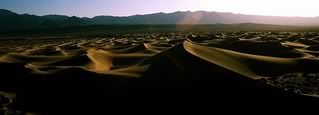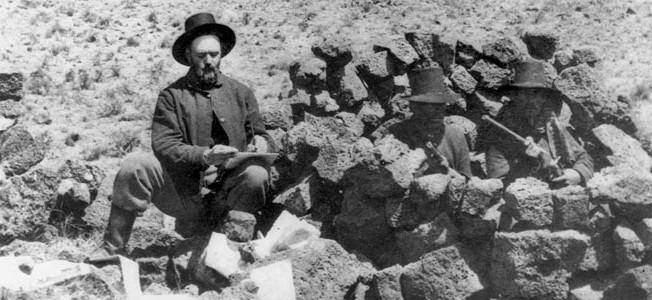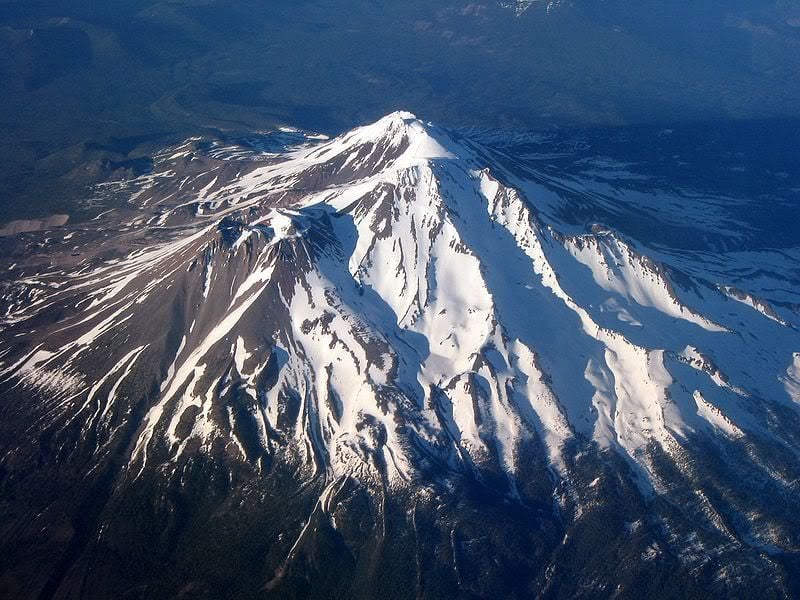Sacred Places in Northern California
Throughout North America there are two basic kinds of sacred American Indian sites: (1) those which are sacred because of human acts of consecration, dedication, and ritual practice, and (2) those which are intrinsically holy, places which are endowed with great spiritual power. Religious traditions which are based on animism-the view that all things are alive and have souls-tend to have sacred places that are natural rather than being made by human beings. Instead of building churches, animists tend to use special places in the natural landscape as portals to the spiritual world.
The Indian nations of Northern California had many different areas which they considered to be sacred. Some of these were places in which creation had occurred; some are places where healing powers can be obtained; and some are places where it is easier to make contact with the spirit world. A few of these are described below.
Mount Diablo, located east of San Francisco Bay, is a sacred place to many of the tribes of Central California. For the Miwok, for example, this is the place where creation took place and where human beings acquired fire.
Mount Shasta is a key figure in the stories and ceremonies of several Indian cultures, including the Karuk, Yurok, Shasta, Hupa, Yana, Pit River, Wiyot, and Wintu. It is one of the main sacred mountains to the Wintu. The souls of the dead go first to Mount Shasta and then to the Milky Way.
In 1988, the Forest Service issued permits for a ski resort on Mount Shasta. Prior to issuing the permits the Forest Service talked with groups who consider Mount Shasta to be sacred — Wintu, Pit River, Shasta, and Karuk. Florence Jones, who is considered the “top doctor” by the Wintu, told them:
“The mountain is where I get my information to treat people. If you ruin my spiritual place, how will I take care of my people as a doctor?”

A photograph of a Hupa shaman by Edward Curtis is shown above.
However, the Forest Service archaeologists found no cultural resources on Mount Shasta which would interfere with the development of a ski resort.

Mount Shasta is shown above.
Patrick’s Point is celebrated in Yurok stories and songs as the last abode of the immortals. These immortal beings left the other parts of Yurok territory when the Yurok people were created. However, they still continue to linger at Patrick’s Point. Among the important spiritual people who are found here are the Porpoise People (the porpoises are considered to be a people.)
In 1992, the Yurok people working with the California Department of Parks and Recreation constructed the Yurok village of Sumeg at this site. The village includes three living houses, two sweat houses, and a Brush Dance pit. A ceremonial Brush Dance is held at the site.
Medicine Lake in the Modoc National Forest in northeastern California was formed 100,000 years ago with a volcanic eruption which left a caldera or basin in which the lake formed. This is an area which is of spiritual importance to the Pit River, Modoc, Klamath, Shasta, Karuk, and Wintu. According to the Pit River Tribal Council:
“The area of the Medicine Lake Highlands is important to the culture, religious practices of the Ajumawai and Atwamsini Bands of the Pit River Nation, and to the Pit River Tribe as a whole”
The Medicine Lake area is still used for vision quests, for gathering healing herbs, and for other ceremonies.

A photograph of the Medicine Lake Highlands by the U.S. Forest Service is shown above.
In 1998, the federal government granted leases which allow for the development of geothermal energy sources around the volcanic Medicine Lake Highlands. The following year, the Medicine Lake caldera was found eligible to be added to the National Register of Historic Places as a Traditional Cultural District because of its long use by Northern California tribes.

A photograph of the Klamath by Edward Curtis is shown above.
Cave of Hands is located in Pico Blanco in Monterey County. The Cave of Hands, sacred to the Costanoan, contains more than 250 hands made by tracing and filling in. Archaeologists estimate that these painting were done more than 3,190 years ago.
Mount Offield is considered the most sacred mountain in Karuk territory. The Karuk call this place Ikxaréeyav Túuyship which means “mountain of the immortals.” During the World Renewal Ceremony, the Karuk would burn the brush on the slope of the mountain (a practice which was stopped by the Americans).
Crater Lake in southern Oregon is sacred to the Klamath. The lake was formed 7,700 years ago when a volcano – Mount Mazama – erupted and collapsed. The caldera then filled with water making it the deepest lake in North America (1,943 feet). Oral history tells of the volcanic eruption and the formation of the lake. The eruption reflected the battle between Llao, a mountain spirit, and Skell. After the lake was formed, the Klamath used the area as a vision quest site. They call the lake Giwas and it is here that the vision seekers can become one with all creation and obtain their spiritual power.

Crater Lake is shown above.
This list is meant to be illustrative, not exhaustive. I realize that I have not provided a great deal of detail about the nature of these sites, but since I am not affiliated with any of the Northern California tribes, it would be inappropriate for me to provide greater detail.



